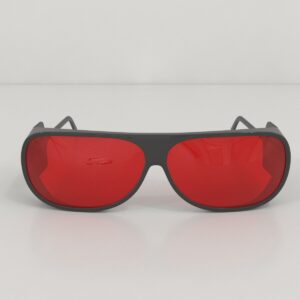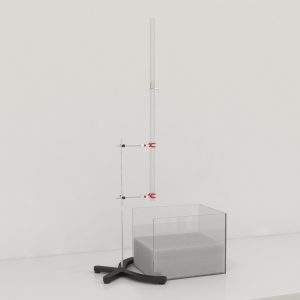$25.00
Anesthesia breathing bags are devices used in the administration of anesthesia. They are used to manually ventilate a patient during surgery when a mechanical ventilator is not available. The bags come in various sizes and are made of latex or latex-free materials. They are connected to an anesthesia machine or a simple oxygen source, and the clinician squeezes the bag to deliver breaths to the patient.

RWD is a global leader in the design and manufacturing of advanced research and laboratory equipment. Specializing in high-precision instruments for neuroscience, behavioral science, and pharmacology.



Breathing bags in an anesthetic system are collapsible ellipsoid containers that serve as a reservoir for anesthetic gases and as a means for manual ventilation. The reservoir bags, also known as counter lungs, allow visual assessment of the presence and estimation of the volume of ventilation. These bags form a crucial part of most anesthetic systems, since, during normal spontaneous inspiration, anesthetic machines are incapable of providing the needed peak inspiratory gas flow.
Breathing bags are elastic and are available as disposable and reusable variants. Disposable bags, in comparison to reusable variants, are usually thinner and lighter, yet they provide reasonable durability. Generally, the reservoir bags are made of natural rubber (latex); however non-latex versions are also available for subjects with latex allergies. To improve the grip, they are usually textured. However, hourglass-shaped breathing bags are also available to allow a better grip.
Breathing bags are usually mounted at or near the carbon dioxide absorbent canister with the help of a T-shaped fitting or at the end of a corrugated tubing leading from the T-connector in a circle breathing system.
Breathing bags are generally made of rubber although latex-free disposable versions are also available. The bag materials are non-slip, non-permeable, and do not absorb or adsorb the gases. The neck of the reservoir is connected to the breathing system using two female conical fitting connectors having internal diameters of 15 mm and 22 mm. The tail end of the bag has a tubular extension that is at least 2 cm long and functions as a relief mechanism. The size of the bag is dependent on the size of the subject.
| Weight of Animal (kg) | Bag Size (L) |
|---|---|
| 0 - 4.5kg | 0.5 |
| 4.6 - 9kg | 1 |
| 9.7 - 27.2kg | 2 |
| 27.3 - 54.4kg | 3 |
| > 54.4kg | 5 |
In case the pop-off valve has been accidentally kept in the closed position, and gas inflow continues, the pressure-volume characteristics play a crucial role when the breathing bag is inflated. Reservoir bags are one of the components that usually cause the failure of anesthetic machines in the pressure test. Breathing bags deteriorate over time; thus, it is important to inspect them regularly. Cracks and holes around the neck of the breathing bag are often the cause of leakage.
| Weight | 2.20 lbs |
|---|---|
| Material | Non Latex |
| Size | 0.5L, 1L, 2L, 3L |
You must be logged in to post a review.
There are no questions yet. Be the first to ask a question about this product.
Reviews
There are no reviews yet.